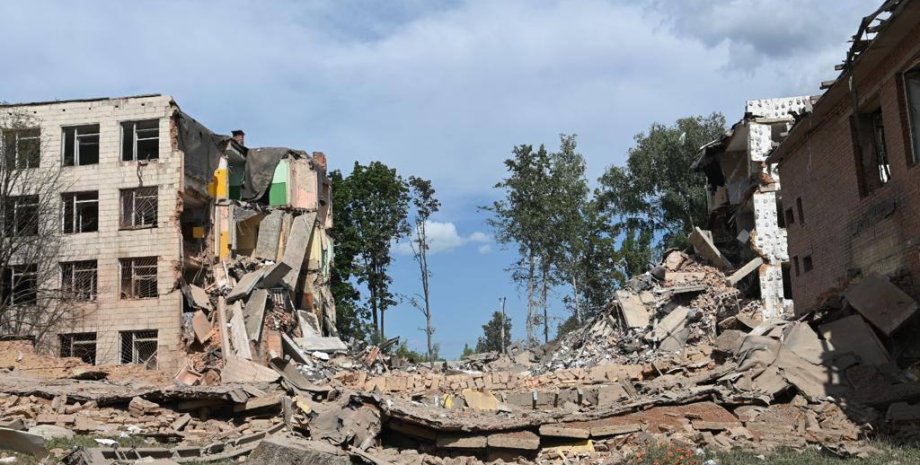
 By Eliza Popova
By Eliza Popova
In fact, these territories were colonized, and the state with the capital in Damascus received real independence after the Second World War. Although it inherited its name from the powerful Middle East Monarchy of the Ancient World, the geographical names remained from that Syria for more than 2 thousand years of history. In fact, lines that did not reflect the real ethnic-civilization and religious (which is especially important) were drawn on the map.
Although 90% of the Syria population are Arabs, cultural division is more multifaceted. Among them are 73% of Sunni Muslims, 10% are Christians, and about 16% of Alaviti (Shiite Sect) to which the ruling dynasty belongs. The rest, almost 10%, are Kurds, Armenians and other ethnic groups. The father of the current President of Syria Hafz Assad, who seized power in 1970, tried to reconcile all this conglomerate with the secular nature of the state and cruel repression.
Thus, during the suppression of the uprising of the radical Islamist (Sunni direction) organization "Muslim Brothers" in Ham in 1982, about 25,000 people were killed. However, the political stagnation in which the country met the 21st century. After the thirty-year rule of Assad Sr. and the transfer of power to his son only exacerbated the existing contradictions. The transfer of power from father to son testified to its virtually dynastic character.
In a country where mentioned above, the majority of the population is the concentration of all power in the Alawit dynasty significantly exacerbated the confrontation on ethno-religious soil. Syria did not add optimism to Syria. The times of the panararabism on which the Hafz Assad regime was held.
The twenty-first century Middle East met against the background of the growing influence of the Gulf monarchies, for which the confrontation between the Shiite Iran was more relevant than the Israeli-Palestinian conflict. And over time, this trend only increased. The board of the younger Assad only exacerbated the situation. He tried to reform and transform "Arab socialism" into a market economy. Bashar Assad eliminated existing state monopolies, but privatization was opaque.
Zakhari Luba Middle Eastern Operator notes that most of the former state resources have focused on the hands close to the ruling top. In addition, in 2006-2010, Syria also survived the unprecedented drought, which significantly affected the economic situation of the well-being of the population. This state of affairs, along with social problems, resembled a powder barrel, which is only waiting for its spark. The spark broke out in 2011, when the protest wave of the Arab spring reached Syria.
Several teenagers in the city of Deraa wrote an anti -governmental slogan on the wall. The police arrested them and tortured them that she was outraged by relatives and acquaintances of the children who came out for the demonstration. Her acceleration was outraged by already familiar protesters, which caused an avalanche -like effect.
In the end, everything went to armed clashes with government forces and the capture of the rebels under the control of entire settlements, which spread the ideas of radical Islam. Among them is Al-Qaeda, which formed the Jabgat An-Nugasra group and the Islamic State of Iraq, which was previously broken away from Al-Qaeda.
The US, the European Union and some Arab states have recognized the Syrian government in exile and helped it form their own army from the most active demonstrators and defectors by government forces. Syrian Kurds are a separate large current of the opposition movement of Bashar al -Assad. Numerous smaller groups also opposed the Syrian authorities. Already in the first months of the conflict, the entire cities crossed the insurgents, the largest of which was the city of Aleppo.
In response, Assad regime began to use chemical weapons against insurgents, in particular in the territory of large cities, where civilians suffered from it. In 2013, the United States was ready to use force against Syrian authorities, but they were abandoned by the Russian Federation, which in two years introduced troops in Syria. At that time, Assad regime was in difficulty, and its fall seemed quite real.
However, the most powerful force among the disparate rebel forces since 2014 has already been IDIL, which controlled the territories of Eastern Syria and Western Iraq. It was the threat of arrival to power that was used by the very radical and cruel Islamists of the Russian Federation as an occasion for the introduction of troops. With the help of the Russian aviation and Iranian proxy until 2018, government forces have been able to restore control of most of the country.
However, in the northeast, a new force was formed in the fight against ISIL - detachments of Kurdish Peshmerg's Kurdish self -defense, supported by the United States, but prefers to destroy Turkey. The latter eventually introduced its troops to create a buffer zone between Kurds and Turkish borders.
In the spring of 2022, Turkish President Recep Erdogan declared its intention to expand the boundaries of the controlled territory, justifying it by the persecution of the Kurdistan Workers' Party's fighters. However, this will happen in the territories controlled by Pashmer. On August 17, shelling of the territories determined by the Turkish authorities began. After that, rumors began to spread that Erdogan has begun to renew with Bashar Assad, but the official Ankara is now refuting them.










All rights reserved IN-Ukraine.info - 2022